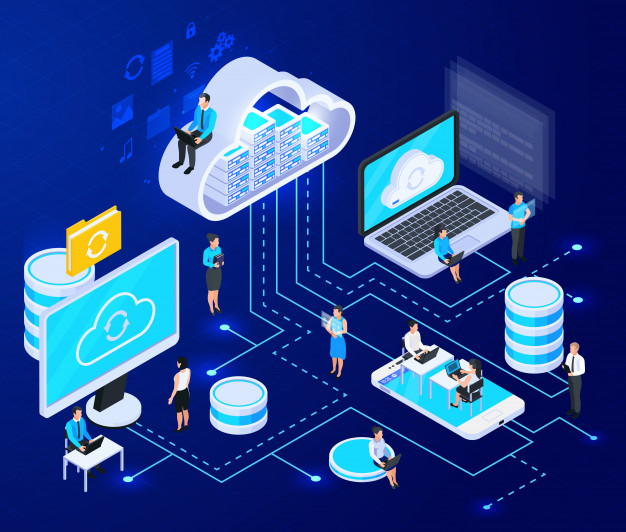Algorithms to take Digital Businesses to Next Level
3AI April 23, 2021

Digital transformation is vital for business growth, but working out what to do and how to do it remains difficult for IT and business leaders. At its heart, the digital revolution is about consumer behavior and business opportunity, not technology. The major changes in how consumers use technology, and to where technology is applied, represent a clear and present opportunity to generate new outcomes for modern businesses. Accordingly, companies are crossing lines of business and entering new markets. As Google is experimenting with self-driving cars, for example, GE is delivering a software platform for connected devices and processes; as Walmart is experimenting with indoor positioning systems, Amazon continues to redefine the nature of digital commerce. The future of business will be defined by how well companies, organizations and governments use technology to engage with partners and customers across a wide range of digitalized processes.
Digital business will draw on the new economics of connections — the creation of value from the increased density of interactions between “things,” people and businesses in interrelated social, information and computer networks
By 2018, 40% of digital commerce sites will use price optimization algorithms and configure/price/quote tools to dynamically calculate and deliver product pricing.
Such capabilities will boost significantly the pace and efficiency of the organizations that exploit algorithms. They will improve their competitive advantage over those organizations that are less committed, and this will widen the gap between leaders and laggards in almost every market.
Value creation will depend less on owning capital assets and more on sharing, providing and exploiting them. Algorithmic business models will enable “things” to become economic agents alongside people and businesses, and will enable those agents to change roles and complete different tasks as their situations change from one business moment to the next.
Creating Digital Humanism using Algorithms for Solution Design
The technology perspective that has long dominated IT system design is automation — the removal of human involvement from a process in order to create efficiency benefits for an organization or to eliminate mundane, inefficient and repetitive activities from people’s lives. But the relationship between technology and people is becoming both more intimate and more complex. This evolution calls for digital humanism.
Digital humanism promotes a different mode of thinking. It postulates that systems and technologies that do not take account of human concerns and aesthetics are insufficient. A good humanistic design would place the desires and needs of humans ahead of the expedient or most accurate solution. In a “machinist” view, consistency and accuracy are key attributes of goodness, but people are seldom accurate and are consistent only in their inconsistency.
By 2017, 40% of organizations will place humanistic-based approaches and architectures at the center of their solution designs.
They will accomplish this by introducing processes designed to observe human behavior, rather than specify requirements. This will require them to make fewer assumptions about how people will work and to give users the power to influence how IT solutions evolve.
The cost of ignoring human-centered, technology-mediated relationships will be high. By 2020, poor customer experiences will destroy 30% of digital business projects. Digital humanism, furthermore, will enable organizations to counter some of the ill effects of the very technology trends they are embracing. By 2020, the impact of interruptions on human effectiveness will cause 40% of enterprises to restrict notifications on wearables and smartphones.
Playground for Algorithms – IoT, Big Data & Advanced Analytics
Together, the rise of advanced analytics, the Internet of Things (IoT), and mainstream adoption of big data technologies and initiatives create both the raw material and the intelligence that algorithms can exploit. By 2018, over half of large organizations globally will compete using advanced analytics and proprietary algorithms, causing the disruption of entire industries. Big data, data discovery and search markets, and algorithmic marketplaces are converging, which is making it simpler to embed predictive and prescriptive algorithms in business processes. By 2018, for example, 20% of large B2B organizations will build business graphs of their sales processes to improve their sales execution.
The IoT, which is composed of immense networks of sensors and sensor-equipped devices, will be a catalyst for innovation when combined with big data and analytics. By 2018, 50% of all durable goods (excluding primary metals and fabricated metal parts) will be remotely configurable using embedded IoT. Forward-looking banks are planning comprehensive support for the IoT to handle the challenge of working with an entirely different kind of customer — one who is not human
Embedded Algorithms and Smart Machines
The complex of technologies known as smart machines is still evolving rapidly. Smart machines are quickly becoming viable, thanks to a series of recent technological breakthroughs. They are introducing “smartness” throughout the work and business environment, with consequences that are difficult for enterprise decision makers to foresee.
For most of the next decade, smart machines will be “smart” only in specific domains and at solving specific kinds of problem. Today’s smart machine technologies have strong perceptual capabilities but lack executive capabilities, so they are not yet able to develop and test new decision-making patterns on their own. Thus, for a range of key functions, organizations are already using advanced analytics and “unsmart,” but effective, rule-based approaches to power smart machines.
Leading insurers are already piloting smart machines. Supervisory duties are increasingly shifting into monitoring workers’ accomplishments through performance measurements that are directly tied to output and customer evaluation. For example, the Uber transportation system hires, fires and manages employees with minimal human interaction.
By 2018, more than 3 million workers globally will be supervised by a “roboboss”.
When devices become smart enough to go beyond simple autonomous behavior to tackle behavior that is less predictable, this opens the door to unexpected — and potentially unwanted — results. The prevalence of metacoin platforms driven by software algorithms, for example, enables the emergence of a fully programmable economy operating beyond the control of centralized institutions or event. Smart, autonomous software robots — likely operating beyond the law — will become both an opportunity and an issue as programmers, investors, bankers, criminals and even politicians swarm to make money in this new area.
Digital transformation is neither simple nor straightforward. While examining new technology options, organizations must also confront the need to change themselves. Organizational changes, cultural changes, and shifts in the very nature of their business will present the stiffest challenges.






